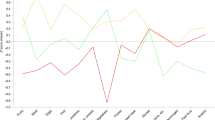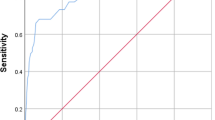Abstract
Objective:
The main aim of this study was to assess the reliability and validity of a food frequency questionnaire with 23 food groups (I-FFQ) among a sample of 9–11-year-old children from three different countries that differ on economical development and income distribution, and to assess differences between country sites. Furthermore, we assessed factors associated with I-FFQ’s performance.
Methods:
This was an ancillary study of the International Study of Childhood Obesity, Lifestyle and the Environment. Reliability (n=321) and validity (n=282) components of this study had the same participants. Participation rates were 95% and 70%, respectively. Participants completed two I-FFQs with a mean interval of 4.9 weeks to assess reliability. A 3-day pre-coded food diary (PFD) was used as the reference method in the validity analyses. Wilcoxon signed-rank tests, intraclass correlation coefficients and cross-classifications were used to assess the reliability of I-FFQ. Spearman correlation coefficients, percentage difference and cross-classifications were used to assess the validity of I-FFQ. A logistic regression model was used to assess the relation of selected variables with the estimate of validity. Analyses based on information in the PFDs were performed to assess how participants interpreted food groups.
Results:
Reliability correlation coefficients ranged from 0.37 to 0.78 and gross misclassification for all food groups was <5%. Validity correlation coefficients were below 0.5 for 22/23 food groups, and they differed among country sites. For validity, gross misclassification was <5% for 22/23 food groups. Over- or underestimation did not appear for 19/23 food groups. Logistic regression showed that country of participation and parental education were associated (P⩽0.05) with the validity of I-FFQ. Analyses of children’s interpretation of food groups suggested that the meaning of most food groups was understood by the children.
Conclusion:
I-FFQ is a moderately reliable method and its validity ranged from low to moderate, depending on food group and country site.
This is a preview of subscription content, access via your institution
Access options
Subscribe to this journal
We are sorry, but there is no personal subscription option available for your country.
Buy this article
- Purchase on Springer Link
- Instant access to full article PDF
Prices may be subject to local taxes which are calculated during checkout




Similar content being viewed by others
References
Willett W . Food Frequency Methods. In: Willet W (ed.). Nutritional Epidemiology, 3rd edn. Oxford University Press: New York, NY, USA 2013, pp 70–95.
Livingstone MBE, Robson PJ, Wallace JMW . Issues in dietary intake assessment of children and adolescents. Br J Nutr 2004; 92 (Suppl 2): S213–S222.
Willett W, Lenart E . Reproducibility and validity of food-frequency questionnaires. In: Willet W (ed.). Nutritional Epidemiology, 3rd edn. Oxford University Press: New York, NY, USA, 2013, pp 96–141.
Kolodziejczyk JK, Merchant G, Norman GJ . Reliability and validity of child/adolescent food frequency questionnaires that assess foods and/or food groups. J Pediatr Gastroenterol Nutr 2012; 55: 4–13.
Cassidy CM . Walk a mile in my shoes: culturally sensitive food-habit research. Am J Clin Nutr 1994; 59 (Suppl 1): S190–S197.
Jaceldo-Siegl K, Fan J, Sabaté J, Knutsen SF, Haddad E, Beeson WL et al. Race-specific validation of food intake obtained from a comprehensive FFQ: the Adventist Health Study-2. Public Health Nutr 2011; 14: 1988–1997.
Maurer J, Taren DL, Teixeira PJ, Thomson CA, Lohman TG, Going SB et al. The psychosocial and behavioral characteristics related to energy misreporting. Nutr Rev 2006; 64: 53–66.
Moore GF, Tapper K, Moore L, Murphy S . Cognitive, behavioral, and social factors are associated with bias in dietary questionnaire self-reports by schoolchildren aged 9 to 11 years. J Am Diet Assoc 2008; 108: 1865–1873.
Klesges LM, Baranowski T, Beech B, Cullen K, Murray DM, Rochon J et al. Social desirability bias in self-reported dietary, physical activity and weight concerns measures in 8- to 10-year-old African-American girls: results from the Girls Health Enrichment Multisite Studies (GEMS). Prev Med 2004; 38 (Suppl 1): S78–S87.
Ferguson EL, Gibson RS, Opare-Obisaw C . The relative validity of the repeated 24h recall for estimating energy and selected nutrient intakes of rural Ghanaian children. Eur J Clin Nutr 1994; 48: 241–252.
Mouratidou T, Miguel ML, Androutsos O, Manios Y, De Bourdeaudhuij I, Cardon G et al. Tools, harmonization and standardization procedures of the impact and outcome evaluation indices obtained during a kindergarten-based, family-involved intervention to prevent obesity in early childhood: the ToyBox-study. Obes Rev 2014; 15 (Suppl 3): S53–S60.
Bel-Serrat S, Mouratidou T, Pala V, Huybrechts I, Börnhorst C, Fernández-Alvira JM et al. Relative validity of the Children’s Eating Habits Questionnaire-food frequency section among young European children: the IDEFICS study. Public Health Nutr 2013; 17: 266–276.
Vereecken CA, Rossi S, Giacchi MV, Maes L . Comparison of a short food-frequency questionnaire and derived indices with a seven-day diet record in Belgian and Italian children. Int J Public Health 2008; 53: 297–305.
Sharma S . Development and use of FFQ among adults in diverse settings across the globe. Proc Nutr Soc 2011; 70: 232–251.
Katzmarzyk PT, Barreira TV, Broyles ST, Champagne CM, Chaput JP, Fogelholm M et al. The International Study of Childhood Obesity, Lifestyle and the Environment (ISCOLE): design and methods. BMC Public Health 2013; 30: 900.
World Bank: World Bank Gini Index. Available at http://data.worldbank.org/indicator/SI.POV.GINI/. 2012.
De Onis M, Onyango AW, Borghi E, Siyam A, Nishida C, Siekmann J . Development of a WHO growth reference for school-aged children and adolescents. Bull World Health Organ 2007; 85: 660–667.
Vereecken CA, Maes L . A Belgian study on the reliability and relative validity of the Health Behaviour in School-Aged Children food-frequency questionnaire. Public Health Nutr 2003; 6: 581–588.
Livingstone MB, Robson PJ . Measurement of dietary intake in children. Proc Nutr Soc 2000; 59: 279–93.
Mikkilä V, Vepsäläinen H, Saloheimo T, Gonzalez SA, Meisel JD, Hu G et al An international comparison of dietary patterns in 9—11-y-old children: the 12-country ISCOLE-study. Int J Obes Suppl 2015 (this issue).
Acknowledgements
We thank the ISCOLE External Advisory Board and the ISCOLE participants and their families who made this study possible. JDM has received funding from the ‘Programa nacional de formación doctoral Francisco Jose de Caldas’ from Colciencias’ (Convocatorias 511-2010). Carlos Mario Pedraza, David Ricardo Leal and Luis Guillermo Gomez are acknowledged for their contribution to this study. A membership list of the ISCOLE Research Group and External Advisory Board is included in Katzmarzyk et al. (this Issue). ISCOLE was funded by The Coca-Cola Company. The funder had no role in study design, data collection and analysis, decision to publish or preparation of the manuscript.
Author information
Authors and Affiliations
Consortia
Corresponding author
Ethics declarations
Competing interests
The authors declare no conflict of interest.
Additional information
Supplementary Information accompanies this paper on International Journal of Obesity Supplements website
Rights and permissions
About this article
Cite this article
Saloheimo, T., González, S., Erkkola, M. et al. The reliability and validity of a short food frequency questionnaire among 9–11-year olds: a multinational study on three middle-income and high-income countries. Int J Obes Supp 5 (Suppl 2), S22–S28 (2015). https://doi.org/10.1038/ijosup.2015.15
Published:
Issue Date:
DOI: https://doi.org/10.1038/ijosup.2015.15
This article is cited by
-
Lack of an association between dietary patterns and adiposity among primary school children in Kilimanjaro Tanzania
BMC Nutrition (2022)
-
Dietary patterns and their associations with overweight/obesity among preschool children in Dongcheng District of Beijing: a cross-sectional study
BMC Public Health (2021)
-
The dietary management of calcium and phosphate in children with CKD stages 2-5 and on dialysis—clinical practice recommendation from the Pediatric Renal Nutrition Taskforce
Pediatric Nephrology (2020)
-
Socioeconomic status and dietary patterns in children from around the world: different associations by levels of country human development?
BMC Public Health (2017)
-
Correlates of compliance with recommended levels of physical activity in children
Scientific Reports (2017)



